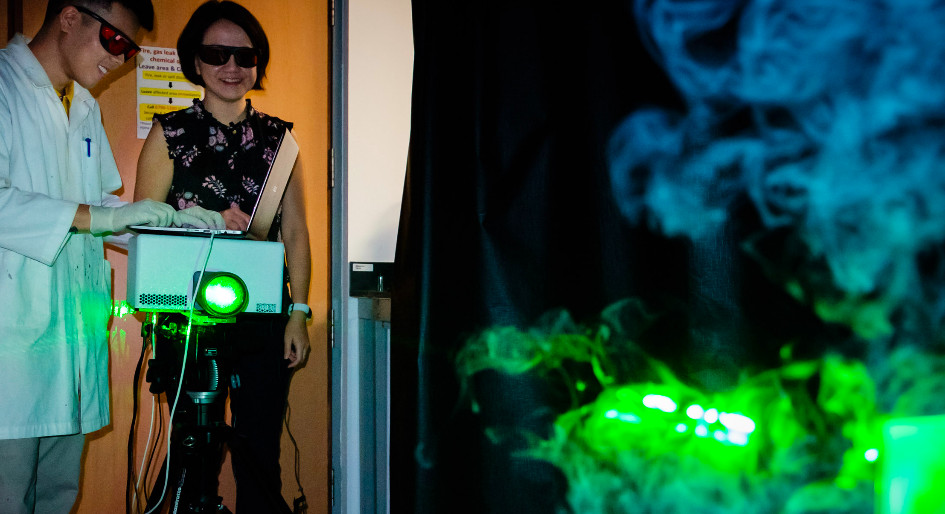A new portable device can quickly identify various airborne chemicals and gases harmful to human health, according to scientists from Nanyang Technological University, Singapore (NTU Singapore).
The new prototype provides real-time monitoring of air quality in events like haze outbreaks, and assists in the detection of gas leaks and industrial air pollution. It can identify hazards like sulphur dioxide and larger compound molecules, such as benzene.
The new technology, reported in the science journal ACS Nano in September, was developed by a research team led by Associate Professor Ling Xing Yi, head of the Division of Chemistry & Biological Chemistry at NTU’s School of Physical and Mathematical Sciences.
Current methods of identifying gases in the air use a laboratory technique called Gas Chromatography – Mass Spectrometry (GC-MS), which is reliable but requires tedious sample collection and takes between a few hours and a few days to obtain results from air samples.
Emergency scenarios require a fast and ongoing analysis of potential air contamination, such as following a natural disaster, chemical spill or illegal dumping of toxic waste, so that emergency responders can take appropriate action.
The new device uses a small patch made of a special porous and metallic nanomaterial to first trap gas molecules. When a laser is shone on it from a few metres away, the light interacts with the gas molecules, causing light of a lower energy to be emitted. When analyzed, it gives a spectroscopic readout in the format of a graph chart.
The spectroscopic readout acts like a “chemical fingerprint” corresponding to various chemicals present on the patch. The whole process takes about 10 seconds to complete. These chemical fingerprints from the sample are referenced against a digital library of fingerprints to quickly determine what chemicals have been detected.
Known as Raman spectroscopy, this is a long-established technique for identifying chemical substances. Typically, it has been used only on solid and liquid samples, since gaseous chemicals are too dilute for the laser and detector to pick up. A special nanostructure was made from a highly porous synthetic material known as a metal-organic framework, which actively absorbs and traps molecules from the air into a ‘cage’.
“Our device can work remotely, so the operation of the laser camera and analysis of chemicals can be done safely at a distance. This is especially useful when it is not known if the gases are hazardous to human health,” said Ling.
The device can also detect PAHs at parts-per-billion (ppb) concentrations in the atmosphere as well as performing continuous monitoring of the concentration of the different types of gases like carbon dioxide (CO2) in the atmosphere, which could be a useful application in many industrial settings.
Through NTUitive, NTU’s innovation and enterprise company, the team has filed for a patent and is now commercializing the technology for use in pollution monitoring, chemical disaster response, as well as other industrial applications.





